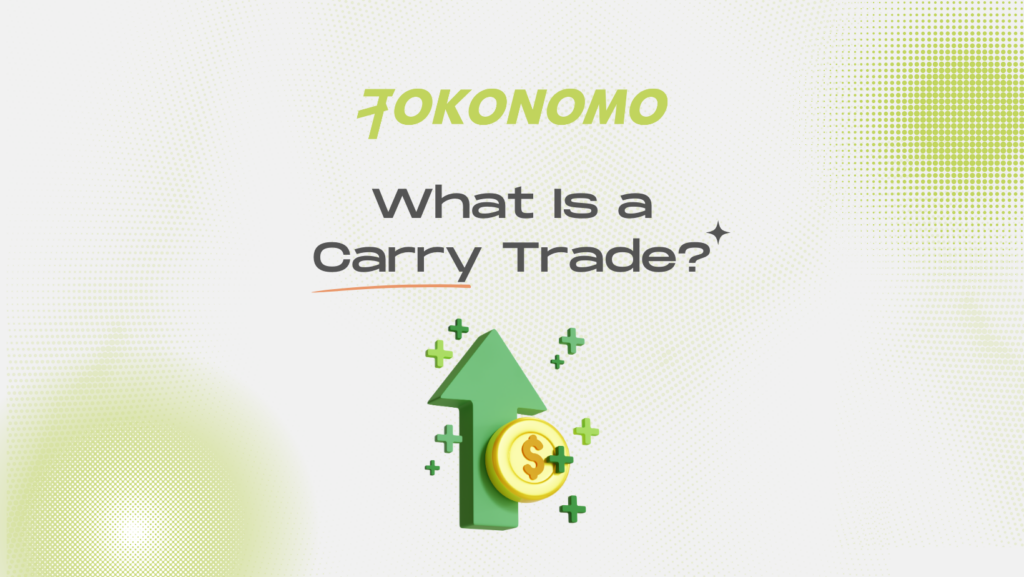What Is a Carry Trade?
A carry trade is an investment strategy in which an individual or institution borrows funds in a currency with low interest rates and subsequently invests that capital in another currency, financial asset, or investment vehicle offering higher returns. The core concept is straightforward: the goal is to capitalize on the disparity between the borrowing cost and the higher yield from the chosen investment.


Although this approach is predominantly utilized in foreign exchange (forex) and currency trading, it can also effectively apply to a wide range of financial instruments, including stocks, bonds, and even commodities.
Understanding How Carry Trades Operate
Here’s how it typically works: you start by taking out a loan in a currency that has very low or nearly zero interest rates—think of the Japanese yen (JPY), which has maintained low rates for many years. After securing the loan, you convert that money into a currency with a higher interest rate, such as the US dollar. Once you’ve acquired the higher-yielding currency, you invest it in assets like US government bonds or other financial instruments that provide a solid return.
For instance, if you borrow yen at an interest rate of 0% and invest it in an asset offering a 5.5% return, you’re effectively earning that 5.5%, minus any associated fees or transaction costs. Essentially, it’s a way of leveraging cheap capital to generate higher returns, provided that currency exchange rates remain favorable.
Reasons Investors Engage in Carry Trades
Carry trades are widely favored because they provide a consistent way to generate returns by capitalizing on interest rate differentials, without relying on the underlying asset’s value to increase. This strategy is particularly appealing to major market participants such as hedge funds and institutional investors, who possess the expertise and resources to effectively manage the associated risks.
In many cases, investors employ leverage in carry trades, which involves borrowing significantly more capital than they actually hold. While this amplifies potential returns, it equally heightens the risk of substantial losses if the trade does not unfold as expected.
Examples of Carry Trade Strategies
A widely recognized example of a carry trade is the classic yen-dollar strategy. For many years, investors took advantage of low interest rates in Japan by borrowing the Japanese yen and then using those funds to invest in U.S. assets that provided significantly higher returns. This strategy proved lucrative as long as the interest rate differential remained favorable and the yen didn’t unexpectedly surge in value against the dollar – which ultimately occurred in July 2024 (more on this later).


Another commonly used carry trade involves emerging markets. In these cases, investors borrow in a low-interest-rate currency and then allocate that capital to higher-yielding currencies or bonds from emerging markets. While the potential returns from these trades can be substantial, they are extremely sensitive to global economic conditions and fluctuations in investor sentiment. If the market environment shifts unfavorably, these trades can quickly transition from profitable to perilous.
Risks Associated with Carry Trades
As with any investment strategy, carry trades are not without their inherent risks. The most significant risk associated with carry trades is currency risk. If the currency you borrowed suddenly appreciates in value compared to the currency in which you have invested, you may find that your anticipated profits vanish or, worse, turn into losses when you convert your funds back.
To illustrate, consider a scenario where you borrow Japanese yen (JPY) to invest in U.S. dollars (USD). If the yen strengthens against the dollar during this period, you could end up losing money when you exchange your dollars back into the yen. Another critical risk to consider is the potential for changes in interest rates. Should the central bank of the currency you borrowed decide to raise interest rates, your borrowing costs will increase, which can significantly diminish your overall profits. Conversely, if the central bank of the currency you invested in lowers interest rates, your returns may suffer as a result.
These risks became starkly evident during the 2008 financial crisis when numerous investors faced substantial losses on carry trades, particularly those involving the yen. In 2024, significant changes in Japan’s monetary policy led to a strengthening of the yen, which triggered a wave of unwinding carry trades and subsequent market turbulence.
How Market Conditions Affect Outcomes
Carry trades generally perform better when market conditions are calm and optimistic. In these stable or bullish environments, currencies and interest rates tend to exhibit less volatility, which encourages investors to embrace risk more readily.
Conversely, when the market experiences turbulence or faces economic uncertainty, carry trades can quickly turn into high-risk ventures. In markets characterized by significant leverage and volatility, investors may become anxious and begin to unwind their carry trades, resulting in substantial fluctuations in currency prices. This unwinding can even trigger broader financial instability.
A notable example occurred in July 2024 when the Bank of Japan unexpectedly raised interest rates. This action caused the yen to surge in value, prompting numerous investors to hastily unwind their yen carry trades. The aftermath involved a frantic sell-off of higher-risk assets to repay yen loans, which not only unsettled currency markets but also ignited a global sell-off of riskier investments. The situation was further exacerbated by the presence of leveraged positions, amplifying the overall impact.
Conclusion
Carry trades present a fascinating opportunity to capitalize on the disparities in interest rates between various currencies or assets. However, it is crucial to carefully consider the inherent risks, particularly in markets that are highly leveraged and prone to volatility.
To achieve success in carry trades, one must possess a solid understanding of global markets, the dynamics of currency movements, and the prevailing trends in interest rates. Given that market conditions can shift unexpectedly, leading to potential losses, carry trades are generally more appropriate for seasoned investors or institutions equipped with the necessary resources to effectively manage and mitigate risks.











